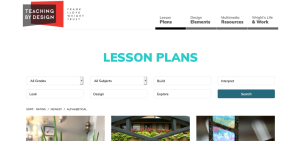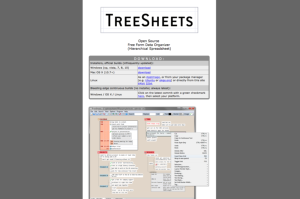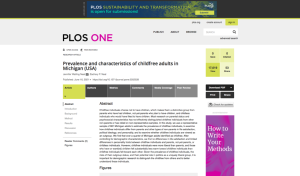Theme: Architecture Education
Back to Top
|
 |
|
Teaching by Design: Lesson Plans
|
Arts |
|
Teaching by Design seeks to carry on the legacy of American architect Frank Lloyd Wright with lesson plans that bring art, design, and nature into the classroom. Wright's ideas, such as organic architecture and community design, are connected with cross-curricular themes including geometry, biology, visual art, and social studies. For example, the "Sprouting Design" activity, inspired by Wright's Robie House, lets students design the footprint of a building with geometric shapes and then germinate grass seeds to create a 3D model of their structure. On the Lesson Plans landing page, each resource is labeled with integrated subjects, as well as the target grade level. Filters at the top of the page let visitors search lesson plans by grade level or subject. Readers can click "View Lesson" for a downloadable PDF of the lesson plan. Teaching by Design is funded in part by the Terra Foundation for American Art and by the Institute of Museum and Library Services. [HCL] |
|





|
|
 |
|
The Architectural Imagination
|
Arts |
|
Architecture is both aesthetic expression and technical achievement, and it engages with history, culture, and society. Students in this free course from Harvard University will explore architecture from all of these perspectives, while learning about architectural design, theory, and history. Academics, hobbyists, and aspiring professional architects will learn hands-on skills such as modeling, perspective drawing, and typology while examining examples of both traditional and contemporary architecture. Readers can view the syllabus before enrolling by clicking "Take Course" and scrolling to the Syllabus section. The course is self-paced and estimated to take 3-5 hours each week over the course of 10 weeks. Auditing is free (students may also choose to pay a fee to receive a certificate upon completion). All video lessons include transcripts. A team of four faculty in architecture, architectural theory, and architectural history teach the course. Those interested in additional online classes can explore Harvard's full offerings by clicking the "view all courses" button in the top-left corner of the page. [HCL] |
|





|
|
 |
|
IIT Roorkee: Sustainable Architecture
|
Arts |
|
Those interested in sustainable building and urban planning should check out this free video course taught by Dr. Avlokita Agrawal of the Indian Institute of Technology (IIT) Roorkee. The course begins with an overview of the concepts of sustainability and sustainable development from a historical perspective, considering how these ideas relate to architecture and other domains such as health, urban planning, and transportation. Dr. Agrawal discusses the meaning of sustainable architecture in relation to other concepts (e.g., green building, eco building, and climate-responsive building). The course delves into five parameters of the design and implementation of sustainable architecture: site development, energy, water, materials and resources, and indoor environmental quality. Students also learn how to use a whole building simulation tool to create models, forecast energy impacts, and more. The course is designed for undergraduate students, but is also useful for graduate students, faculty, and professionals interested in sustainable building concepts and design. The course comprises video lectures, most around 25-50 minutes in length. [HCL] |
|





|
|
 |
|
 |
|
Columbia GSAPP YouTube Channel
|
Arts |
|
From office buildings to prisons to Mars settlements, what do we think about when we design spaces? How does planning influence urban society in the past, present, and future? All of these questions and more are ripe for exploration thanks to the YouTube channel of Columbia University's Graduate School of Architecture, Planning, and Preservation (GSAPP). Most videos are recordings of live events such as lectures, panels, and presentations by faculty, students, and special guests. The most popular videos exemplify the breadth of cross-disciplinary content Columbia GSAPP offers, including talks from fashion designer Virgil Abloh (see the "Spring 2017 Core Lecture Series" playlist) and international architect Bjarke Ingels (see the "Spring 2020 Lecture Series" playlist), as well as a profile of 20th-century Turkish-Armenian brothel owner and real estate investor Matild Manukyan (see the "Studio-X Istanbul" playlist). Viewers can find the most popular videos by clicking the "Sort by" button on the right side and selecting "Most popular." Do not miss the recent four-part series of panels, "Planning Futures? On Decolonial, Postcolonial, and Abolitionist Planning" or the video "Space Settlements," a conversation about architecture in outer space. Historical preservation enthusiasts should check out the "Stonewall 50: Defining LGBTQ Site Preservation" panel (available in three videos from April 15, 2019). The channel hosts a decade's worth of more than 1200 videos, with more added weekly. [HCL] |
|





|
|

















